Climate & Environment
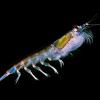 New research about the fate of krill—one of the most abundant species on Earth—during this century has important implications for not only the Antarctic food web, but for the largest commercial fishery in the Southern Ocean.
New research about the fate of krill—one of the most abundant species on Earth—during this century has important implications for not only the Antarctic food web, but for the largest commercial fishery in the Southern Ocean.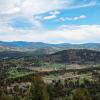 Hannah Brenkert-Smith has studied the role of residents' choices in wildfire risk for two decades, with one goal being to improve mitigation programs. Her most recent work near Bailey, Colorado, concludes residents often overestimate their preparation and underestimate their risk.
Hannah Brenkert-Smith has studied the role of residents' choices in wildfire risk for two decades, with one goal being to improve mitigation programs. Her most recent work near Bailey, Colorado, concludes residents often overestimate their preparation and underestimate their risk.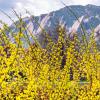 So far, 2021 is one of the 10 wettest years on record since 1872 in the Denver area. Chelsea Nagy discusses what a wet spring and resulting plant growth in the Front Range could mean for the rest of the year.
So far, 2021 is one of the 10 wettest years on record since 1872 in the Denver area. Chelsea Nagy discusses what a wet spring and resulting plant growth in the Front Range could mean for the rest of the year.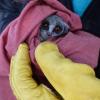 At night in southern Africa, primates called bushbabies emit "spooky" vocalizations that sound like crying children. What may be even spookier is the possible future these adorable creatures face.
At night in southern Africa, primates called bushbabies emit "spooky" vocalizations that sound like crying children. What may be even spookier is the possible future these adorable creatures face.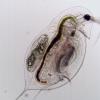 Whether it’s plankton exposed to parasites or people exposed to pathogens, a host’s initial immune response plays an integral role in determining whether infection occurs and to what degree it spreads within a population, new CU Boulder research suggests.
Whether it’s plankton exposed to parasites or people exposed to pathogens, a host’s initial immune response plays an integral role in determining whether infection occurs and to what degree it spreads within a population, new CU Boulder research suggests.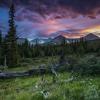 In celebration of Earth Day’s 51st anniversary, CU Boulder Today explores 10 research-related discoveries that have the potential to positively change the way we live and soften humanity’s imprint on our precious planet.
In celebration of Earth Day’s 51st anniversary, CU Boulder Today explores 10 research-related discoveries that have the potential to positively change the way we live and soften humanity’s imprint on our precious planet.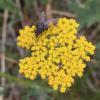 New research finds that common plants and pollinators—from the house fly to the humble yarrow weed—could be crucial in helping ecosystems weather current and future environmental change.
New research finds that common plants and pollinators—from the house fly to the humble yarrow weed—could be crucial in helping ecosystems weather current and future environmental change.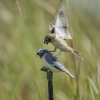 By looking at this newly emerged bird, a CU Boulder-led research team found an ‘evolutionary shortcut’ for speciation.
By looking at this newly emerged bird, a CU Boulder-led research team found an ‘evolutionary shortcut’ for speciation. Given the urgency of the risks posed by climate change, the U.S. should pursue a research program for solar geoengineering—in coordination with other nations, subject to governance and alongside a robust portfolio of climate mitigation and adaptation policies, according to a new report co-authored by Lisa Dilling.
Given the urgency of the risks posed by climate change, the U.S. should pursue a research program for solar geoengineering—in coordination with other nations, subject to governance and alongside a robust portfolio of climate mitigation and adaptation policies, according to a new report co-authored by Lisa Dilling.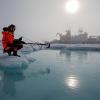 A CU team froze their ship in Arctic ice in the name of science and storytelling. The crew conducted groundbreaking research, studying everything from the atmosphere above their heads to the sea ice beneath their feet during the largest-ever expedition of its kind.
A CU team froze their ship in Arctic ice in the name of science and storytelling. The crew conducted groundbreaking research, studying everything from the atmosphere above their heads to the sea ice beneath their feet during the largest-ever expedition of its kind.


